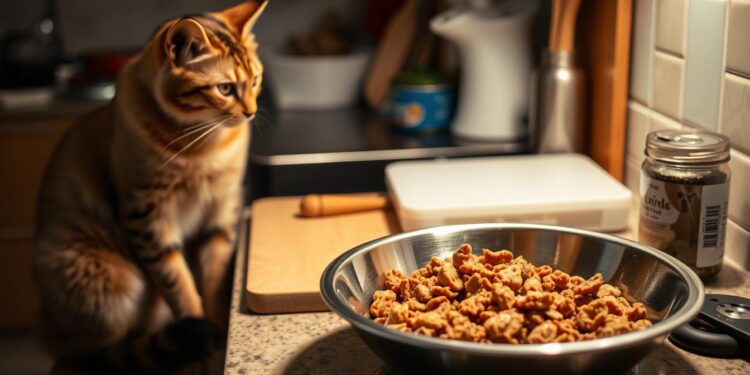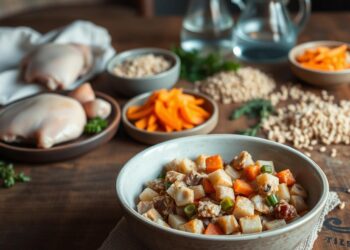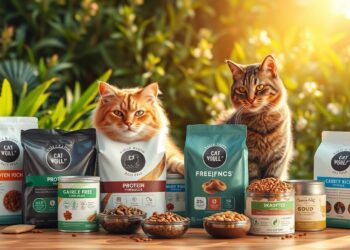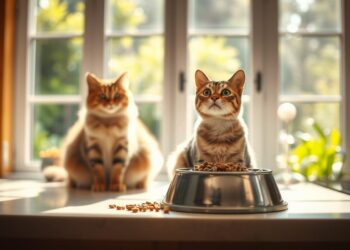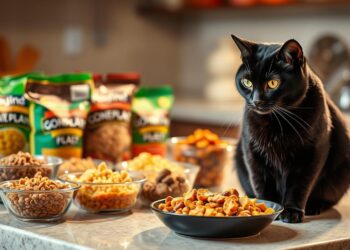As a pet owner, there’s nothing quite like the joy of seeing your feline companion thrive on the food you prepare for them. Cooking for your beloved pet can be a rewarding experience, allowing you to tailor their meals to their specific nutritional needs.
Making nutritious cat meals at home can be a simple and cost-effective way to ensure your pet is getting the best possible start in life. By understanding your cat’s dietary requirements, you can create healthy and delicious meals that cater to their individual needs.
Key Takeaways
- Understand your cat’s nutritional needs before making their food at home.
- Choose fresh and wholesome ingredients for your cat’s meals.
- Consult with a veterinarian to ensure your cat’s diet is well-balanced.
- Start with simple recipes and adjust as needed.
- Be patient and flexible when introducing new foods to your cat’s diet.
Understanding the Basics of Homemade Cat Food Recipes
Cats are obligate carnivores, requiring a diet rich in protein from animal sources. Understanding their nutritional needs is fundamental to creating healthy, homemade cat food recipes.
Essential Nutrients Your Cat Needs
Cats require specific nutrients that are often found in meat. These include essential amino acids like taurine, vitamins, and minerals. A well-balanced homemade cat food recipe must include these elements to ensure the cat’s overall health.
- Protein-rich ingredients such as chicken, fish, or beef.
- Taurine, an amino acid crucial for heart health.
- Vitamin A for vision and immune function.
- Omega-3 fatty acids for skin and coat health.
Consulting with a veterinarian is a critical step before making any significant changes to your cat’s diet. They can help you determine the best nutritional balance for your cat’s specific needs.
Safety Guidelines for Preparing Cat Food at Home
Preparing homemade cat food requires adherence to safety guidelines to prevent contamination and ensure the food is safe for consumption.
- Handle raw ingredients safely to avoid cross-contamination.
- Use clean equipment and storage containers.
- Follow proper cooking and heating procedures.
It’s also important to research and understand the risks associated with homemade cat food, such as nutritional deficiencies or bacterial contamination.
Equipment Needed for DIY Cat Food
To prepare homemade cat food, you’ll need basic kitchen equipment. This includes a meat grinder or food processor, cooking pots, and storage containers.
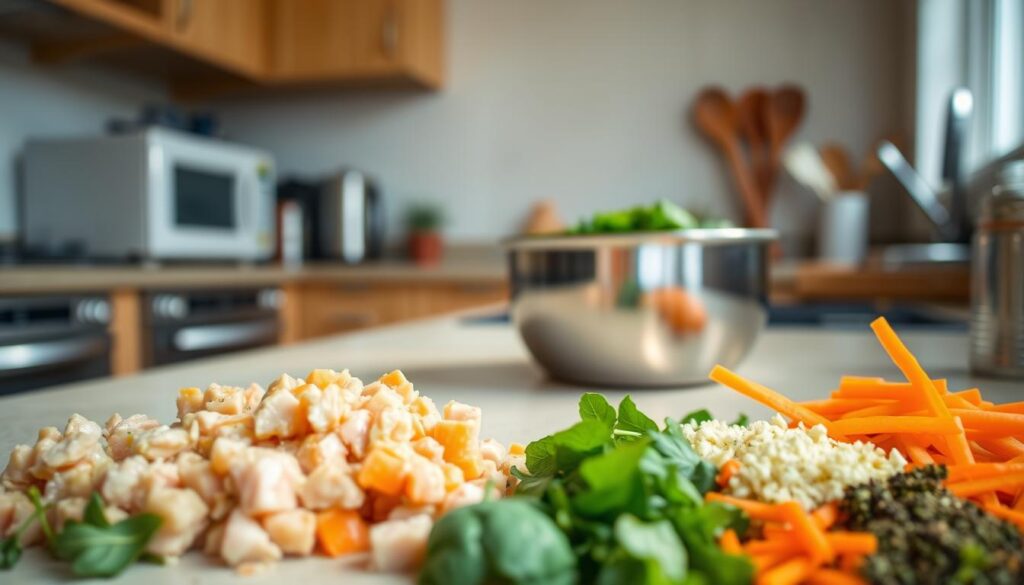
Storage and Preparation Tips
Proper storage and handling of homemade cat food are crucial to maintaining its nutritional value and safety.
- Store food in airtight containers in the refrigerator or freezer.
- Label containers with the date prepared.
- Follow a rotation to ensure older batches are consumed before they spoil.
By understanding the basics of homemade cat food recipes and following these guidelines, you can provide your cat with healthy, nutritious meals tailored to their needs.
Top 5 Nutritious Homemade Cat Food Recipes
Cooking for your cat can be a fun and rewarding experience, especially when you have the right recipes. Preparing simple cat food recipes at home allows you to control the ingredients, ensuring your cat gets the nutrients they need. Here are five healthy homemade pet food recipes to try.
Chicken and Rice Formula
The chicken and rice formula is a classic homemade cat food recipe that’s easy to digest. It includes boneless chicken breast, cooked rice, and green beans. To prepare, cook the chicken and rice, then mix in steamed green beans.
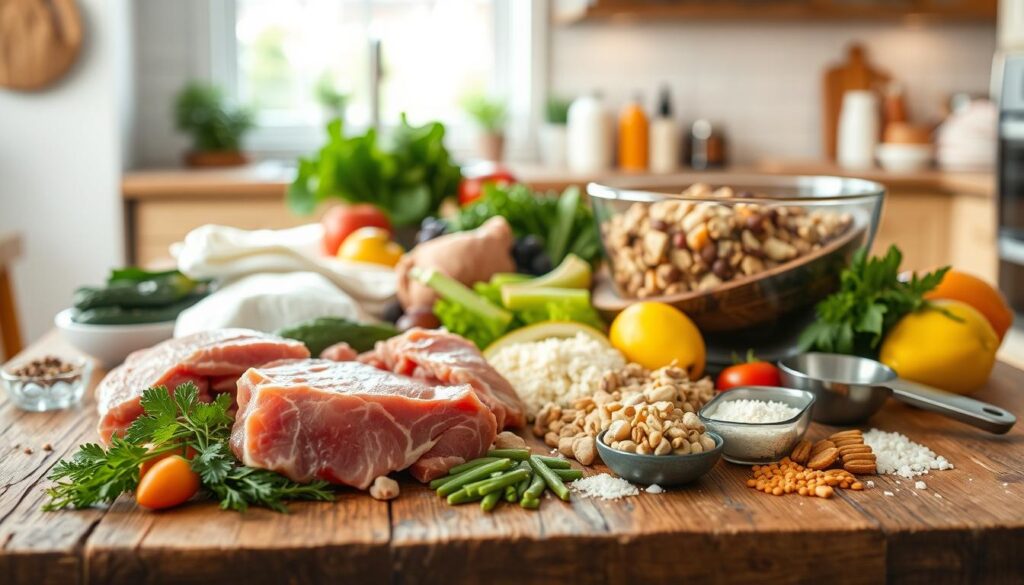
Fish-Based Recipe for Seafood-Loving Cats
For cats that love seafood, a fish-based recipe can be a great option. This recipe includes salmon fillets, sweet potatoes, and green peas. Simply bake the salmon, boil the sweet potatoes, and steam the peas, then mix everything together.
Beef and Vegetable Blend
A beef and vegetable blend provides a hearty meal for your cat. This recipe combines ground beef, carrots, and peas. Cook the ground beef, steam the carrots, and mix everything together.
Turkey and Pumpkin Mix
The turkey and pumpkin mix is a nutritious and easily digestible recipe. It includes ground turkey, canned pumpkin, and green beans. Cook the turkey, mix it with canned pumpkin and steamed green beans.
These simple cat food recipes are not only delicious but also packed with nutrients. By cooking for your cat, you can ensure they’re getting the best possible start in life.
Conclusion
Preparing homemade cat food recipes is a thoughtful way to ensure your feline companion receives the nutrients they need for optimal health. Understanding feline nutrition is crucial in creating meals that cater to your cat’s specific dietary requirements.
By following the guidelines and recipes outlined in this article, you can provide your cat with a balanced and healthy diet. The top 5 nutritious homemade cat food recipes discussed offer a variety of options to suit different tastes and nutritional needs.
Before making any changes to your cat’s diet, it’s essential to consult with a veterinarian to determine the best approach for your cat’s specific needs. With the right guidance, homemade cat food recipes can be a great way to promote your cat’s overall well-being and satisfaction.
